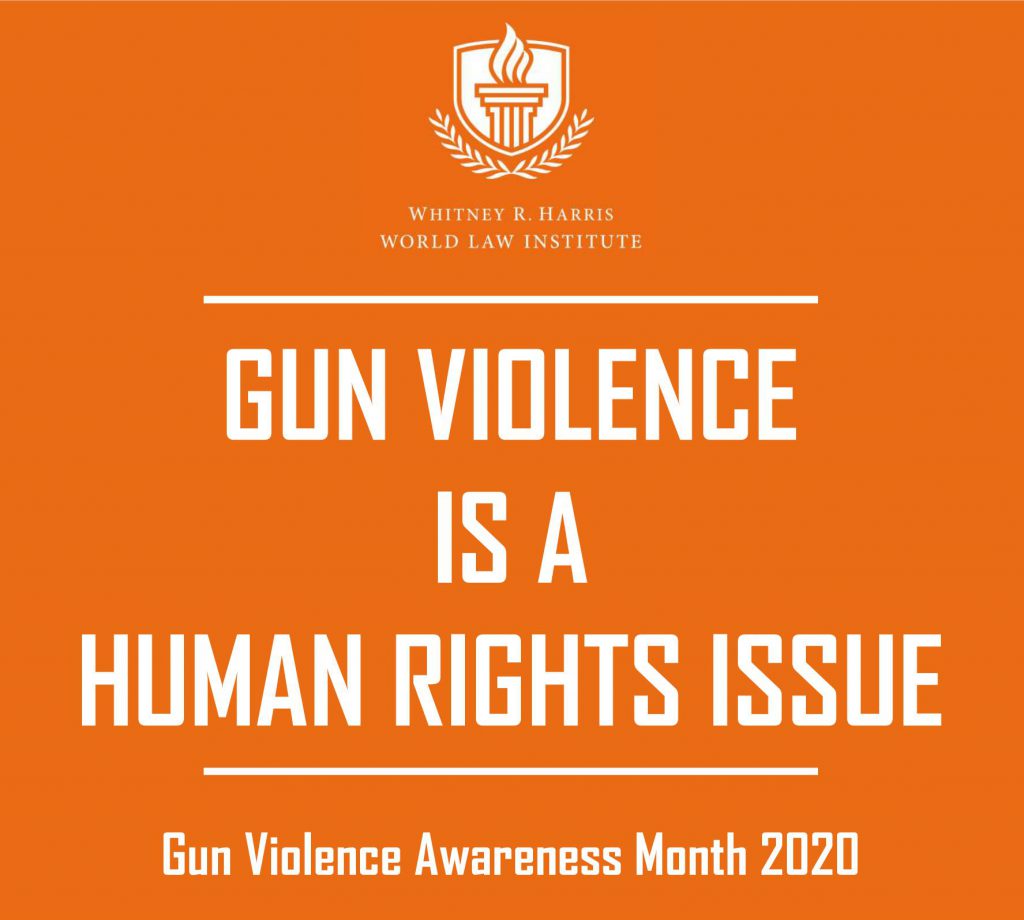By: Odis Johnson Jr., Professor of Sociology and Education; Director of the Institute in Critical Quantitative, Computational, & Mixed Methodologies; Associate Director of the Center for the Study of Race, Ethnicity & Equity, Washington University in St. Louis.
This blog is part of a special series by the Harris Institute’s Gun Violence and Human Rights Initiative and the Institute for Public Health’s Gun Violence Initiative in recognition of National Gun Violence Awareness Month, launched on June 5th for Gun Violence Awareness Day. Throughout this series we will highlight the work being done on this critical issue across campus, the St. Louis region, and the country.
On May 29, 2020 the country woke up to news headlines that demonstrations had erupted in the city of Louisville, Kentucky in protest of the fatal police shooting of Breonna Taylor on March 13. While many questions remain about the details of the shooting, the use of Ms. Taylor’s address by a suspected drug dealer as his own prompted law enforcement to secure a no-knock warrant to enter her apartment. Despite the apprehension of the suspected drug dealer at a different location earlier that morning, police forcibly entered Ms. Taylor’s apartment just before 1:00 am, encountered gun fire from her boyfriend who was licensed to carry, and fatally shot Ms. Taylor, who was unarmed. While our research study of fatal interactions with police found that only 7 percent of police homicides were committed against women in a nearly two-year timespan, Black women were the only race-gender group where the majority (60 percent) were unarmed at the time they were killed by police. Undoubtedly, racial disparities in the use of lethal force by police on unarmed women of color causes the public to consider that there exists a deadly double standard that categorically undervalues Black lives, and among them foments a legitimate fear of state violence.
The tragic shooting of Ahmaud Arbery on February 23, 2020 by surrogates of the state underscores the apparent precarity of Black wellbeing within contemporary America. On that day, Arbery was jogging until he was gunned down by Gregory and Travis McMichael. The McMichaels reportedly tried to initiate a citizen’s arrest of Arbery because, to them, he looked like someone suspected of recent robberies. Also, homeowners were reportedly told by a Glynn County police officer to contact the McMichael’s to pursue possible trespassers, since Gregory McMichael’s was a former police detective and investigator for the local district attorney. Video footage captured the scenario that heightens the terror felt by many Black Americans that viewed it: an unsuspecting target within the racialized imagination of white gunmen who believed the interests of the state legitimized their pursuit of Arbery and ultimately their decision to end his life. While none of Arbery’s assailants were active police officers at the time of his murder, an appearance of state indifference to Arbery’s death grew as the delay in the arrest of the perpetrators extended to nearly 75 days. Indeed, state indifference to Arbery’s death stands in contrast to the scrutiny Arbery might have faced if he had killed one or more of his assailants to defend himself. Stand your ground defenses tend to protect only the interests of Whites when Black lives are involved, and appear especially incapable of protecting Black defendants when the victim is White. Such evidence of disparate (rather than equal) protections under the law enshrines the devaluation of Black lives as an interest of the state.
Guns should be considered what they are: vectors of bodily injury and death that undermine public health and humanity. However, digital devices and research, such as the Fatal Interactions with Police Study, have captured the use and impact of excessive force by agents of the state in communities of color, supporting the realization that guns are also vectors of state violence and racial terror. This reality extends in large part from the worldview and dispositions of the officer that decides to pull the trigger. The murder of George Floyd is an example of this; officers did not need a gun to kill a man who was pleading for his life while in full view of the public. Policymakers therefore need to address weak gun regulations, but also the presence of systemic racism among those officers in which we have placed the public trust. This is a point shared by the UN Working Group of Experts on People of African Descent which argued in its most recent report about African Americans, “Contemporary police killings and the trauma it creates are reminiscent of the racial terror lynching of the past. Impunity for state violence has resulted in the current human rights crisis and must be addressed as a matter of urgency” (2016). These are concerns raised in previous years by other UN committees, including the UN Human Rights Committee in 2014, the UN Committee Against Torture in 2006, and the UN Committee on the Elimination of Racial Discrimination in 2001. Perhaps this is the moment in our nation’s long history of state violence that the U.S. will embrace human and civil rights, and turn away from racial terror.

